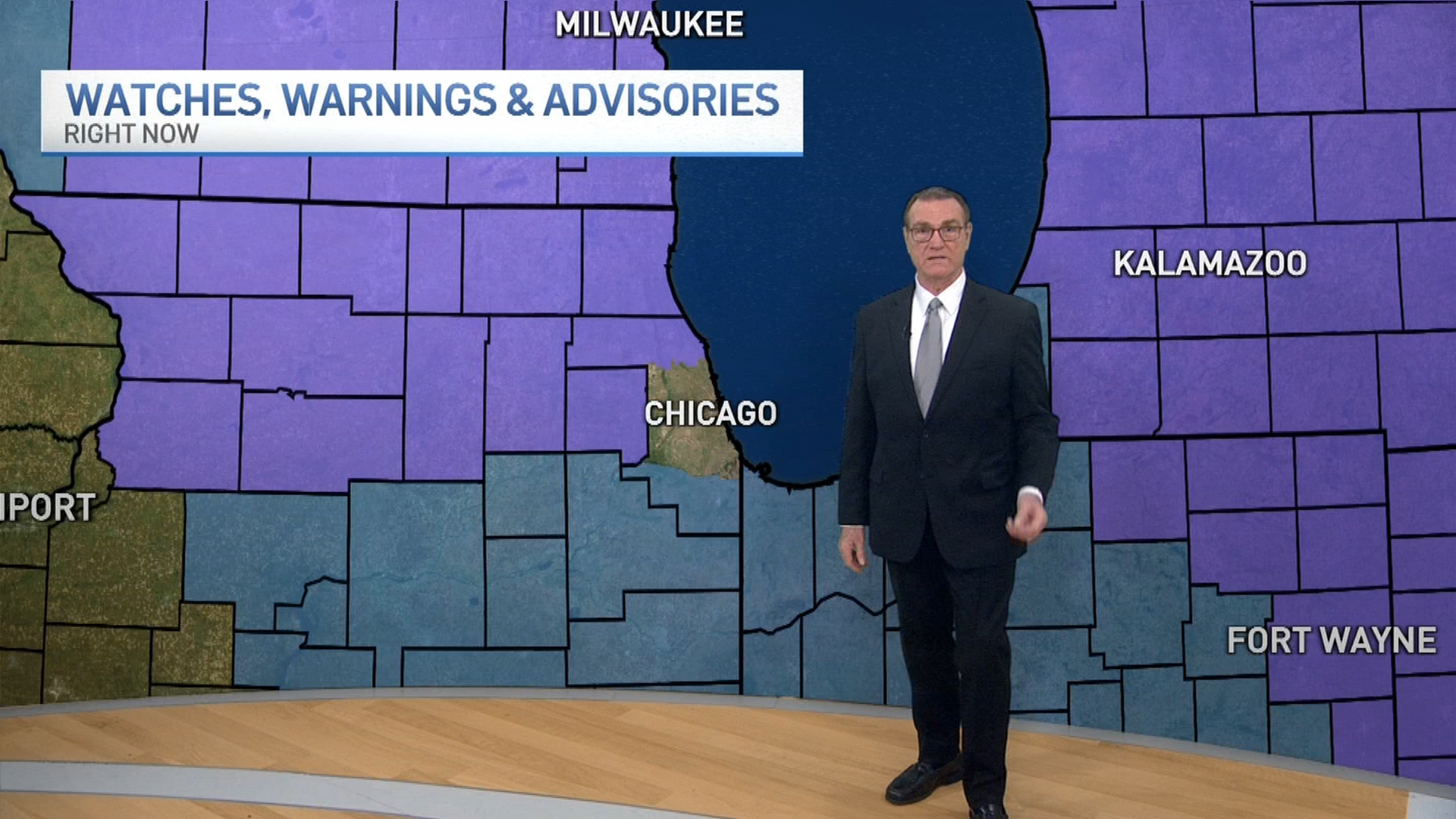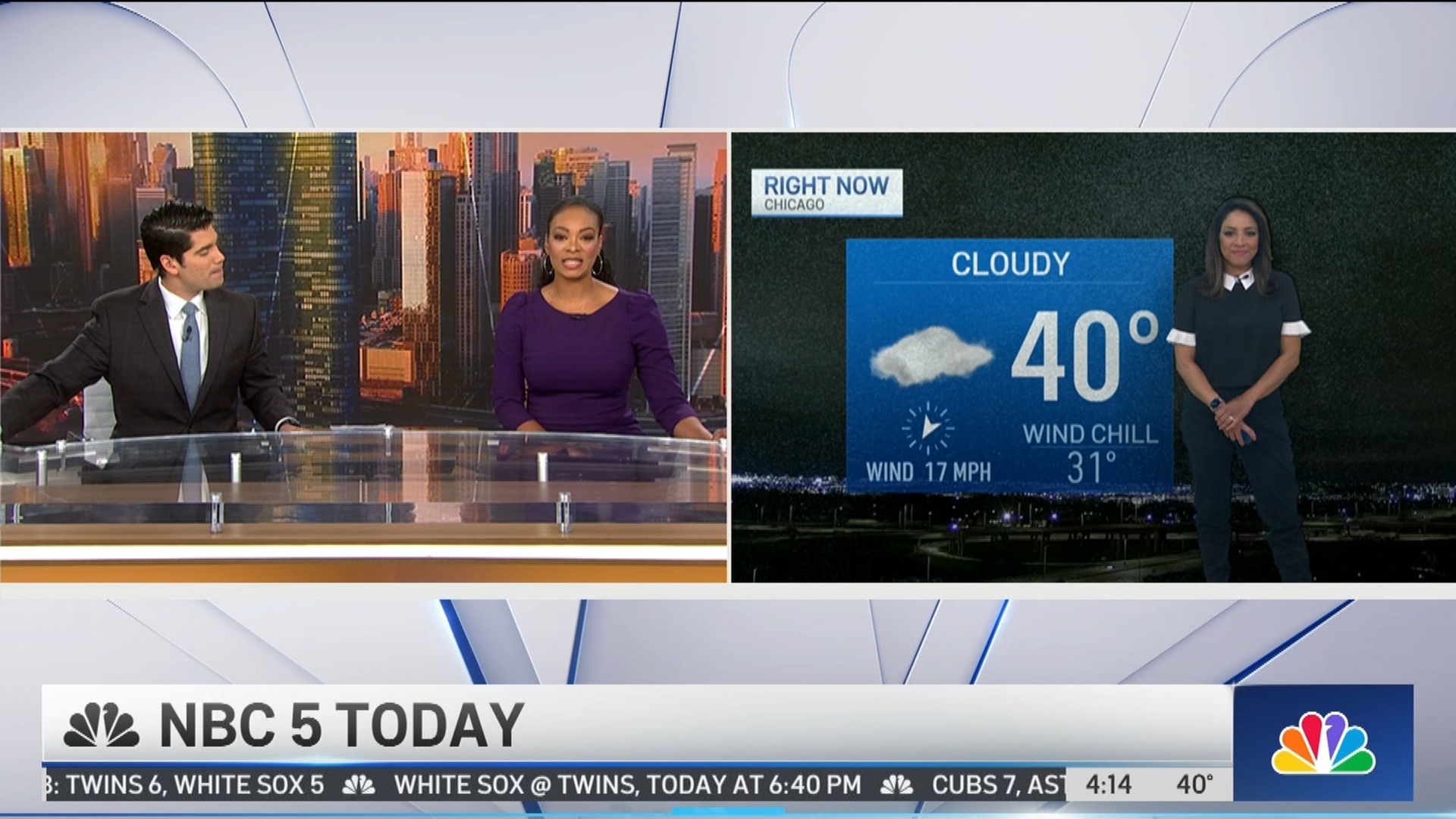A lot of weather terms are being used lately, with Hurricane Ian set to hit Florida as a dangerous Category 4 storm and Typhoon Noru in Vietnam, but you may have also seen words like tropical cyclone, tropical storm and more. So what do they all actually mean?
According to the National Weather Service, hurricanes and typhoons are incredibly similar. In fact, they are only separated by one thing: the location where they hit.
Both types of storms are considered tropical cyclones, which the weather service describes as a "generic term used by meteorologists to describe a rotating, organized system of clouds and thunderstorms that originates over tropical or subtropical waters and has closed, low-level circulation."
Cyclones, Hurricanes and Typhoons
Feeling out of the loop? We'll catch you up on the Chicago news you need to know. Sign up for the weekly Chicago Catch-Up newsletter here.
The storms each have maximum sustained winds of 74 miles per hour or higher.
Ones that hit in the North Atlantic, central North Pacific or eastern North Pacific are considered hurricanes. In the Northwest Pacific, it's a typhoon and in the South Pacific or Indian Ocean tropical cyclone is most-often used.
When a tropical cyclone sees maximum sustained winds between 39 miles hour and 74 miles per hour it is considered a tropical storm. Winds below that are known as tropical depressions. Typhoons with wind speeds of 150 miles per hour or more are known as "super typhoons."
Weather
Within hurricanes, there is another set of ranking, however. They're known as categories on what's called a Saffir-Simpson Hurricane Wind Scale.
The rankings range between five categories, which are based entirely on wind speeds and estimated damage. It's not until hurricanes reach a Category 3 or higher, however, that they are considered major storms in which significant damage and death is possible.
Here's a breakdown of each hurricane category, according to the National Oceanic and Atmospheric Administration:
Category 1: Winds 74-95 mph
These storms have very dangerous winds, capable of producing some damage. Well-constructed frame homes could have damage to roof, shingles, vinyl siding and gutters. Large branches of trees will snap and shallowly rooted trees may be toppled. Extensive damage to power lines and poles likely will result in power outages that could last a few to several days.
Category 2: Winds 96-110 mph
Extremely dangerous winds will cause extensive damage: Well-constructed frame homes could sustain major roof and siding damage. Many shallowly rooted trees will be snapped or uprooted and block numerous roads. Near-total power loss is expected with outages that could last from several days to weeks.
Category 3: Winds 111-129 mph
Devastating damage will occur: Well-built framed homes may incur major damage or removal of roof decking and gable ends. Many trees will be snapped or uprooted, blocking numerous roads. Electricity and water will be unavailable for several days to weeks after the storm passes.
Category 4: Winds 130-156 mph
Catastrophic damage will occur: Well-built framed homes can sustain severe damage with loss of most of the roof structure and/or some exterior walls. Most trees will be snapped or uprooted and power poles downed. Fallen trees and power poles will isolate residential areas. Power outages will last weeks to possibly months. Most of the area will be uninhabitable for weeks or months.
Category 5: Winds 157 mph or higher
Catastrophic damage will occur: A high percentage of framed homes will be destroyed, with total roof failure and wall collapse. Fallen trees and power poles will isolate residential areas. Power outages will last for weeks to possibly months. Most of the area will be uninhabitable for weeks or months.
Fujita Scale
These wind categories are different from tornado wind speeds, which are ranked using what's known as the Fujita scale.
| F-Scale Number | Intensity Phrase | Wind Speed | Type of Damage Done |
|---|---|---|---|
| F0 | Gale tornado | 40-72 mph | Some damage to chimneys; breaks branches off trees; pushes over shallow-rooted trees; damages sign boards. |
| F1 | Moderate tornado | 73-112 mph | The lower limit is the beginning of hurricane wind speed; peels surface off roofs; mobile homes pushed off foundations or overturned; moving autos pushed off the roads; attached garages may be destroyed. |
| F2 | Significant tornado | 113-157 mph | Considerable damage. Roofs torn off frame houses; mobile homes demolished; boxcars pushed over; large trees snapped or uprooted; light object missiles generated. |
| F3 | Severe tornado | 158-206 mph | Roof and some walls torn off well constructed houses; trains overturned; most trees in forest uprooted |
| F4 | Devastating tornado | 207-260 mph | Well-constructed houses leveled; structures with weak foundations blown off some distance; cars thrown and large missiles generated. |
| F5 | Incredible tornado | 261-318 mph | Strong frame houses lifted off foundations and carried considerable distances to disintegrate; automobile sized missiles fly through the air in excess of 100 meters; trees debarked; steel re-inforced concrete structures badly damaged. |
Hurricane Ian
Florida's west coast is bracing for impact from what's being called a "life-threatening storm" as Hurricane Ian strengthened to a dangerous Category 4 hurricane before making landfall on Wednesday.
With maximum sustained winds at 155 mph, 2 mph short of a Category 5 hurricane, Ian is expected to cause devastating storm surge, catastrophic winds and flooding along the state's heavily populated Gulf Coast from Bonita Beach to the Tampa Bay region, the National Hurricane Center in Miami said in a 8 a.m. advisory Wednesday.
Winds exceeding tropical-storm strength of 39 mph had already reached Florida by 3 a.m. Wednesday and hurricane-force winds were expected in Florida well in advance of the storm's eyewall moving inland, the Miami-based NHC center said.
Ian made landfall as a Category 3 storm Tuesday in Cuba just southwest of the town of La Coloma in the Pinar Del Rio province, bringing down the electricity grid and leaving the entire island without power.
A tropical storm warning was in effect for Indian Pass to the Anclote River, all of the Florida Keys, Flamingo to South Santee River, Flamingo to Chokoloskee, Lake Okeechobee, Florida Bay and for southeastern Florida from south of Boca Raton.



